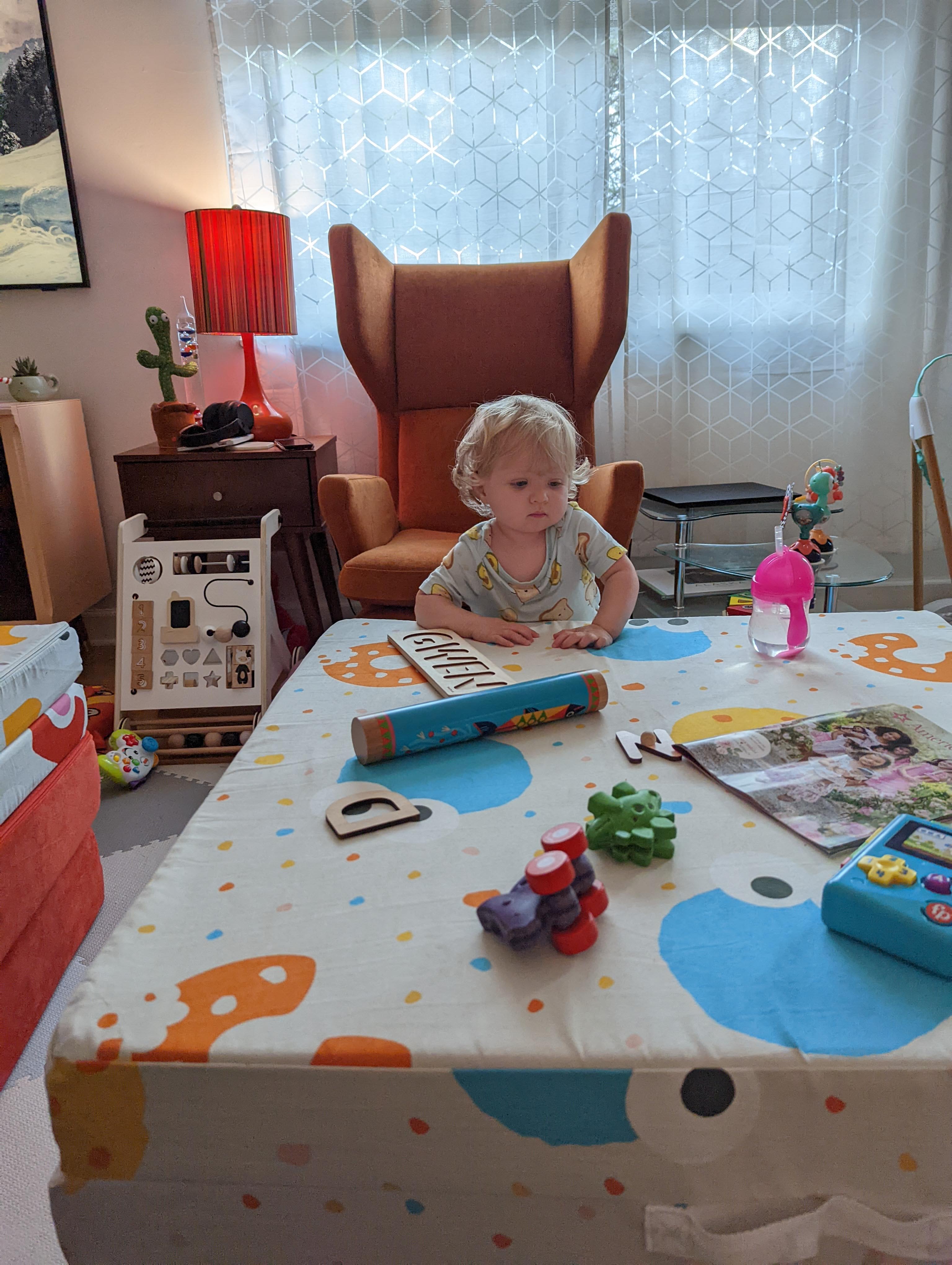Gwen's Prosthetics
Skin Care & Prosthetic Cleaning
To keep Gwen’s skin healthy, we use Aquaphor daily. For cleaning her liners and sockets, we use Aquaphor Baby Unscented Soap, which helped resolve previous skin irritation caused by scented soaps. Additionally, we wipe down her liners with alcohol wipes every few days to keep everything fresh and clean.
Slippers
We call them Gwen’s “slippers,” though there isn’t really a universal name for them. These are soft, foam-based covers for the end of her legs that let her move around comfortably without putting on her full prosthetics. They’re especially useful at home, similar to how anyone might wear slippers around the house, so Gwen doesn’t have to put on her legs every time she wants to get up and move.
The slippers are made from two types of foam. The outside is a more rigid PE Lite foam that gives structure and shape, while the inside is lined with a softer white foam for comfort. On the bottom of each slipper is a rubber sole that provides grip and traction, making it safe for walking on smooth surfaces.
Gwen typically wears her slippers with regular socks. They stay on well without any kind of suspension system, making them easy for her to use independently.
We also use these at the pool or beach, where prosthetics aren’t practical. They’re lightweight and easy to slip on and off, which makes them incredibly convenient. Gwen usually gets a new pair each year when her prosthetics are remade. Every time we attend a camp or limb difference gathering, other parents tend to ask about them, as many haven’t seen this type of solution before. We would highly recommend them to anyone with young kids who use prosthetics. They’ve made a big difference in Gwen’s daily life.
Gwen's Slippers
Set 1: First Prosthetics
Gwen received her first set of prosthetics around her first birthday. The setup included a basic pediatric SACH foot attached directly to the socket, keeping her low to the ground for better balance. The socket used a PE-Lite liner and a suspension sleeve that rolled up over her thigh.
When we got our first set of prosthetics, it's not like we put them on her and she just started walking. She did not want to wear them at all at first. We would encourage her to wear them by distracting her with toys. We would encourage her to stand by putting something she really wanted on a chair or surface she wanted to play with. We would even let her watch TV as long as she was standing in her legs. With persistence, we were able to get her to tolerate wearing the legs longer and longer.

Using Nugget play couches as motivation to stand and take first steps
We bought some Nugget play couches which we used to make foam tables and put toys on them. We would start placing toys on the Nuggets and encouraged her to start taking steps while holding onto them. When she got better at that, we would space the Nuggets apart so that she would transfer and walk from one to the other to get to different toys, until eventually she was able to stand without holding onto anything.
We also signed her up for gymnastics and a music class. Being around other kids and seeing them walk also motivated her. During this time, we were also doing physical therapy at Children's Hospital where she learned strategies like standing up on an open floor without anything to grab onto.
This part is hard and takes a lot of effort, but with patience and creative motivation, Gwen eventually learned to walk confidently in her first prosthetics.
Gwen walking along the Nugget play couch during her early prosthetic training
Set 2: Scout Foot Upgrade
This set kept the same socket and suspension sleeve but upgraded to the Scout foot. Gwen did very well in this setup and gained a lot of speed and confidence. However, once potty training started, the high suspension sleeve became a hassle. Otherwise, these legs worked great for her.
Set 3: Gel Liners & Pin Locks
For the third set, we moved to a gel liner and pin lock system, which stops just above the knee, this made potty training much easier. Finding liners that fit Gwen properly was challenging since most manufacturers don’t make custom gel liners for small kids. On one leg, we used a distal cup to help with fit. On the other leg, we used gel spots to get everything aligned correctly.
This set also included the Truper foot. It offered more flexibility for uneven surfaces, but Gwen's gait didn’t feel as smooth as it was with the Scout foot from Set 2. If we were doing it again, we’d likely stick with the Scout foot instead.
Set 4: Formula Foot
This latest set kept the gel liner and pin system, but we upgraded to the Formula pediatric foot. This foot has been a massive improvement. Gwen now walks faster, and when holding her hand, we no longer feel the shock of each footfall like we did with previous feet. Her steps are softer, her balance improved immediately, and she began alternating feet on stairs without any prompting. The Formula foot has been a huge success, and we plan to continue using it going forward.
Gwen playing baseball with the Miracle League, wearing her 4th set of prosthetics with the Fillauer Pediatric Formula foot
Home | First Steps | Sports & Activities | Groups & Community | Accessible Playgrounds | Camps & Programs | Travel & Vacations | Limb Difference in Media | Prosthetics & Equipment | Care Teams & Providers